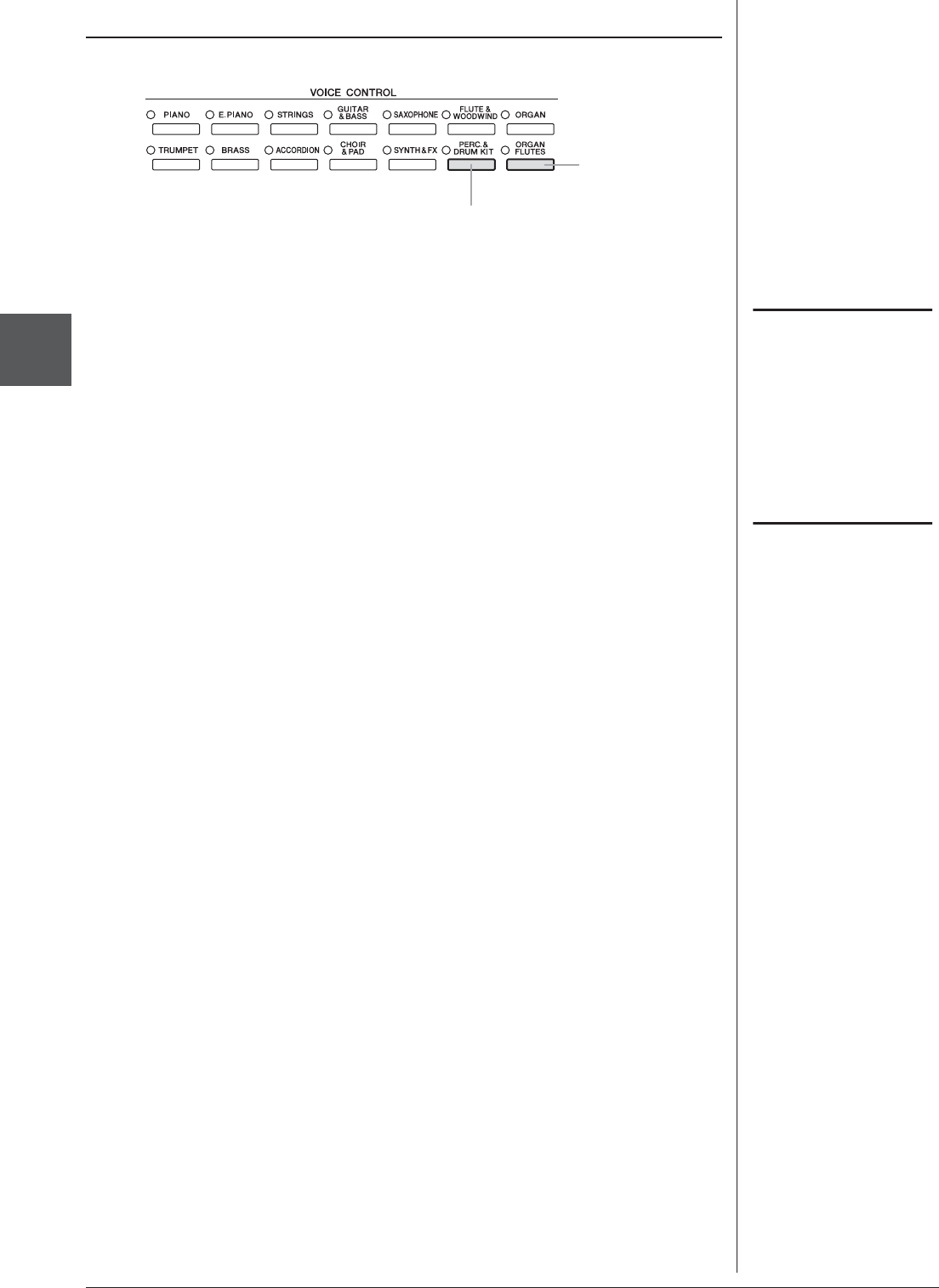
40 CVP-509/505/503/501 Owner’s Manual
Voices – Playing the keyboard –
2
• Voice Characteristics
The Voice type and its defining characteristics are indicated above the Voice
name—Live!, Cool!, Sweet!, etc. For detailed explanation, refer to the Reference
Manual.
In this section, only MegaVoice and Super Articulation Voices (SA and SA2) are
explained. These Voices have special characteristics you should be aware of, and
they require specific performance techniques to bring out all of their expressive
qualities.
MegaVoices (CVP-509/505/503)
What makes MegaVoices special is their use of velocity switching. Each velocity
range (the measure of your playing strength) has a completely different sound.
For example, a guitar MegaVoice includes the sounds of various performance
techniques. In conventional instruments, different Voices having those sounds
would be called up via MIDI and played in combination to achieve the desired
effect. However, now with MegaVoices, a convincing guitar part can be played
with just a single Voice, using specific velocity values to play the desired sounds.
Because of the complex nature of these Voices and the precise velocities need to
play the sounds, they’re not intended for playing from the keyboard. They are,
however, very useful and convenient when creating MIDI data—especially when
you want to avoid using several different Voices just for a single instrument part.
Super Articulation Voices (CVP-509/505)
The word “articulation” in music usually refers to the transition or continuity
between notes. This is often reflected in specific performance techniques, such as
staccato, legato and slur. Two types of Voices—Super Articulation (SA) Voices
and Super Articulation 2 (SA2) Voices—enable you to create these subtle
musical expressions, simply by how you play. (SA2 Voices are available only on
the CVP-509.)
• SA Voices (S.Articulation!)
The SA Voices provide many of same benefits as the MegaVoices, but with
greater playability and expressive control in real time.
For example, with the Saxophone Voice, if you play a C and then a D in a
very legato way, you will hear the note change seamlessly, as though a
saxophone player played it in a single breath. Similarly with the Concert
Guitar Voice, the D note would sound as a “hammer on,” without the string
being plucked again.
Depending on how you play, other effects such as shake or breath noises (for
the Trumpet Voice), or finger noises (for the Guitar Voice) will be produced.
Voice Types
Percussion/Drum Voices
When one of the Voices is selected from this button,
you can play various drums and percussion instru-
ments or SFX (sound effects) sounds on the key-
board. Details are given in the Drum List of the
separate Data List.
Organ Flutes Voices
(page 46)
NOTE
MegaVoices, SA and SA2 Voices are
only compatible with other models
which have those types of Voices
installed. Any Song or Style data
you’ve created on the instrument
using these Voices will not sound
properly when played back on other
instruments.
NOTE
MegaVoices, SA and SA2 Voices
sound differently depending on the
keyboard range, velocity, touch, etc.
Hence, if you apply HARMONY/ECHO
effect, change the transpose setting or
change the Voice Set parameters,
unexpected or undesired sounds may
result.


















